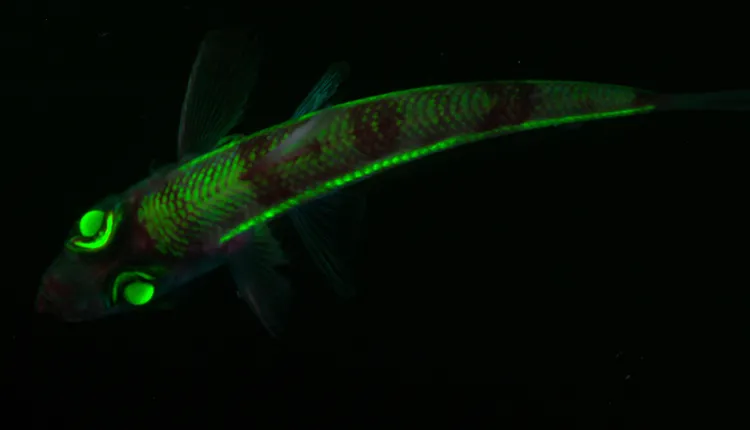A Shortnose Greeneye Fish Aglow

Under white light, this shortnose greeneye fish (Chlorophthalmus agassizi) looks unimpressive. But, in dim blue light—the type usually seen at depth—it shows its true fluorescent colors.
NOAA scientists collected this specimen during a 2004 expedition for optical studies. The scientists believe the green flourescence of the fish’s eye lenses help it detect prey better in dimly lit water.
Bioluminescent creatures emit and produce their own light, whereas fluorescence is the emission of light by a substance—not always living—that has absorbed light or other radiation of a different wavelength. Animals use bioluminescence for many reasons including communication, but fluorescent creatures depend on the light to determine when they "glow."
According to the scientists who were part of NOAA's 2004 expedition, the shortnose greeneye fish's lens absorbs light that comes from the surface of the ocean, but it lets through the turquoise-colored light of most bioluminescence creatures. This allows the fish to discern the color of its prey in deep ocean waters.

